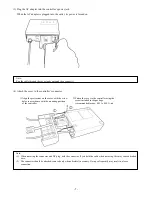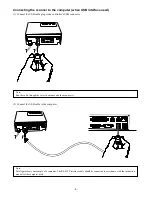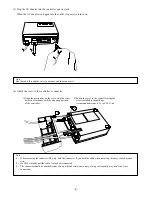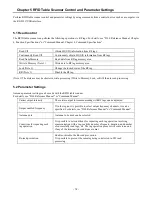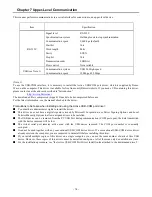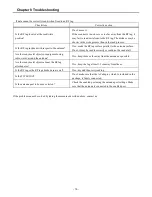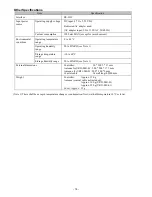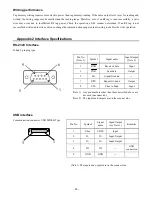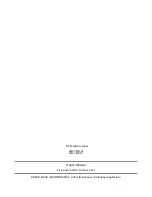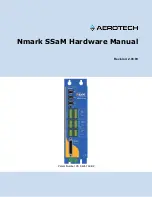
- 14 -
Chapter 7 Upper-Level Communication
This scanner performs communication via a serial interface for connection to an upper-level device.
Item
Specification
RS-232C
Signal level
: RS-232C
Synchronization system
: Half-duplex start-stop synchronization
Communication speed
: 9,600 bps (default)
Start bit
: 1bit
Word length
: 8bits
Parity
: EVEN
Stop bit
: 1bit
Transmission order
: LSB-first
Flow control
: Not available
USB (see Note 1)
Communication system
: USB 2.0 High-speed
Communication speed
: 12 Mbps, 480 Mbps
(Note 1)
To use the USB-COM interface, it is necessary to install the Active USB-COM port driver, which is supplied by Denso
Wave, on the computer. This driver is available for free from our QBdirect website. If you need a CD containing this driver,
please contact us at the address described in “Introduction.”
http://www.qbdirect.net
The downloaded file is compressed (zipped). It needs to be decompressed before use.
For the latest information, see the manual attached to the driver.
Precautions to be taken when installing and using the Active USB-COM port driver:
You must have administrator rights to install the driver.
This driver does not have a digital signature issued by Microsoft Corporation; use Driver Signing Options and Local
Policies¥Security Options to allow unsigned drivers to be installed.
The USB device can be removed from the PC USB Port during communication (COM port open); the data transmitted
with the device removed will be lost.
The virtual serial port remains active even with the USB device removed. The COM port number is constantly
occupied.
It cannot be used together with any conventional USB-COM device driver. If a conventional USB-COM device driver
already exists on the computer, you are requested to uninstall it before installing this driver.
If you install multiple copies of this driver on a single computer, you can use the same number of units of this USB
device. However, these copies of this driver cannot be unstalled one-by-one. All of them can only be unstalled at a time.
For the installation procedure, see “the Active USB-COM Port Driver Install Guide attached to the downloaded driver”.








